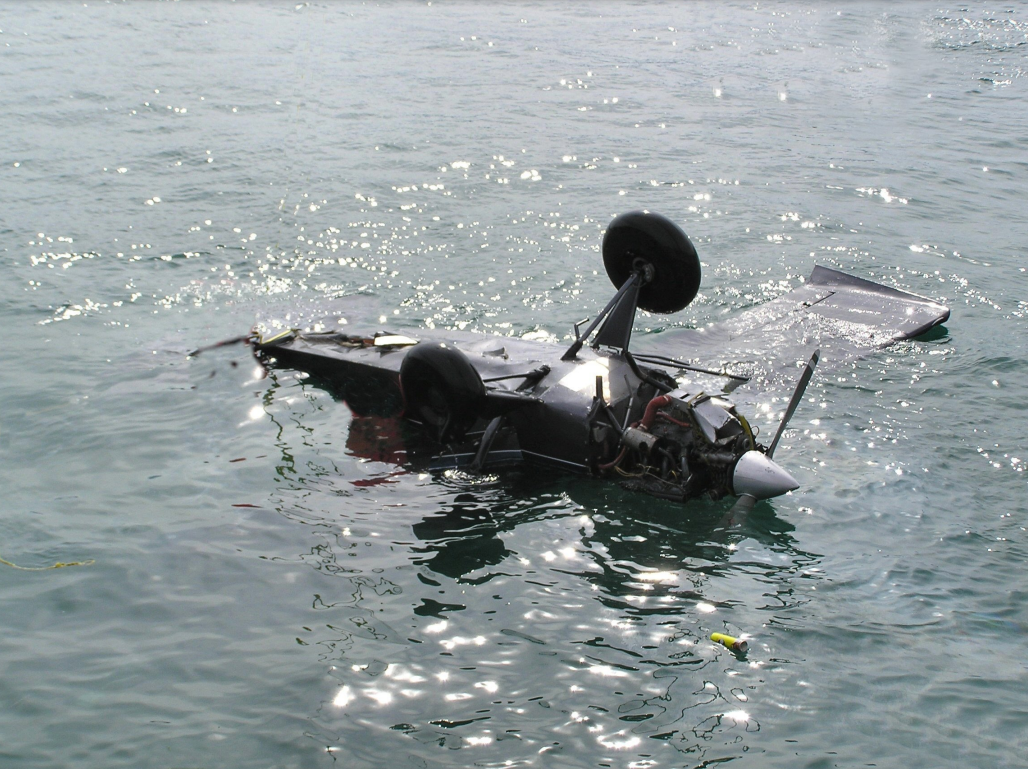
ASN Wikibase Occurrence # 294651
This information is added by users of ASN. Neither ASN nor the Flight Safety Foundation are responsible for the completeness or correctness of this information.
If you feel this information is incomplete or incorrect, you can submit corrected information.
| Date: | Sunday 15 August 2004 |
| Time: | 13:23 |
| Type: |  Maule M-5-235C |
| Owner/operator: | Private |
| Registration: | N6194M |
| MSN: | 7187C |
| Total airframe hrs: | 2042 hours |
| Engine model: | Lycoming O-540-J1A5D |
| Fatalities: | Fatalities: 2 / Occupants: 3 |
| Aircraft damage: | Substantial |
| Category: | Accident |
| Location: | Seward, AK -
 United States of America United States of America
|
| Phase: | En route |
| Nature: | Private |
| Departure airport: | Birchwood Airport, AK (PABV) |
| Seward Airport, AK (SWD/PAWD) | |
| Investigating agency: | NTSB |
| Confidence Rating: |
On August 15, 2004, about 1323 Alaska daylight time, a tundra tire-equipped Maule M-5-235C airplane, N6194M, sustained substantial damage during an emergency landing and ditching in the ocean waters of Resurrection Bay, about 1 mile southwest of Seward, Alaska. The airplane was being operated as a visual flight rules (VFR) cross-country personal flight under Title 14, CFR Part 91, when the accident occurred. Of the three people aboard, the private pilot sustained minor injuries, and the two passengers sustained fatal injuries. Visual meteorological conditions prevailed, and no flight plan was filed. The accident airplane was one of two airplanes operating as a flight of two, en route to a remote beach site located about 24 miles southeast of Seward. Both of the airplanes departed from the Birchwood Airport, Chugiak, Alaska, about 1230.
The private pilot, with two passengers, was flying one of two wheel-equipped airplanes en route to a remote beach site. The route of flight was over ocean waters, flanked by steep vertical cliffs to the waters edge. After passing over the last suitable landing site, an airport about 12 miles north, the accident pilot reported to the pilot of the second airplane that he had a severe engine oil leak, and was retuning to the airport. The pilot reported that once the oil stopped leaking, about 3 miles from the airport, the engine began to vibrate so violently that he thought the engine was going to be torn from its mounts, and he shut the engine off. He said he turned the airplane in an attempt to glide to the nearest beach, but he was unable to reach the beach, and was forced to ditch the airplane about 300 yards from shore. When the airplane's main landing gear wheels touched the water, it nosed over abruptly, and the cabin rapidly filled with water. The pilot said he struggled to free himself and the passengers from their seat belts, while upside-down, and submerged in cold ocean water. Once he was free, he swam to the rear of the airplane, kicked out one of the aft windows, swam to the surface, and summoned help. Rescue personnel discovered the two passengers still restrained within their seats. A postaccident examination of the engine revealed that a hex head plug at the front of the engine, in front of the propeller governor idler gear shaft, was missing, allowing engine oil under pressure to flow overboard. Additionally, the propeller governor idler gear shaft setscrew was loose, and the idler gear shaft was missing. There was no evidence that the hex head plug had been safety wired as required at the last engine overhaul, 299.6 service hours prior to the accident. According to the owner/pilot, he and a friend assembled the overhauled components of the accident engine in the pilot/owner's home-based shop. He said that that all work was accomplished in accordance with Textron Lycoming technical data. The pilot/owner did not possess an aviation mechanic's certificate. The pilot/owner reported that his friend, who owned and operated an aircraft maintenance facility, was supervising his work during the engine overhaul. A review of the engine logbooks revealed that the overhaul was certified by the pilot/owners friend, who also possessed inspector authority (IA).
Probable Cause: The failure of an aviation mechanic/inspector to adequately inspect the pilot/owner's work during the engine overhaul, which resulted in a loss of engine oil and engine power during cruise flight, and a subsequent ditching. Factors associated with the accident were the inadequate installation of the idler gear shaft setscrew, and the lack of a safety wire on the three-quarter inch hex head (oil) plug in front of the idler gear shaft. Additional factors associated with the accident were the lack of suitable terrain for a forced landing, and ocean water.
Accident investigation:
 |
|
Sources:
NTSB ANC04FA092
Images:


Photos: NTSB
Revision history:
| Date/time | Contributor | Updates |
|---|---|---|
| 12-Oct-2022 07:31 | ASN Update Bot | Added |
Corrections or additions? ... Edit this accident description
The Aviation Safety Network is an exclusive service provided by:


 ©2024 Flight Safety Foundation
©2024 Flight Safety Foundation